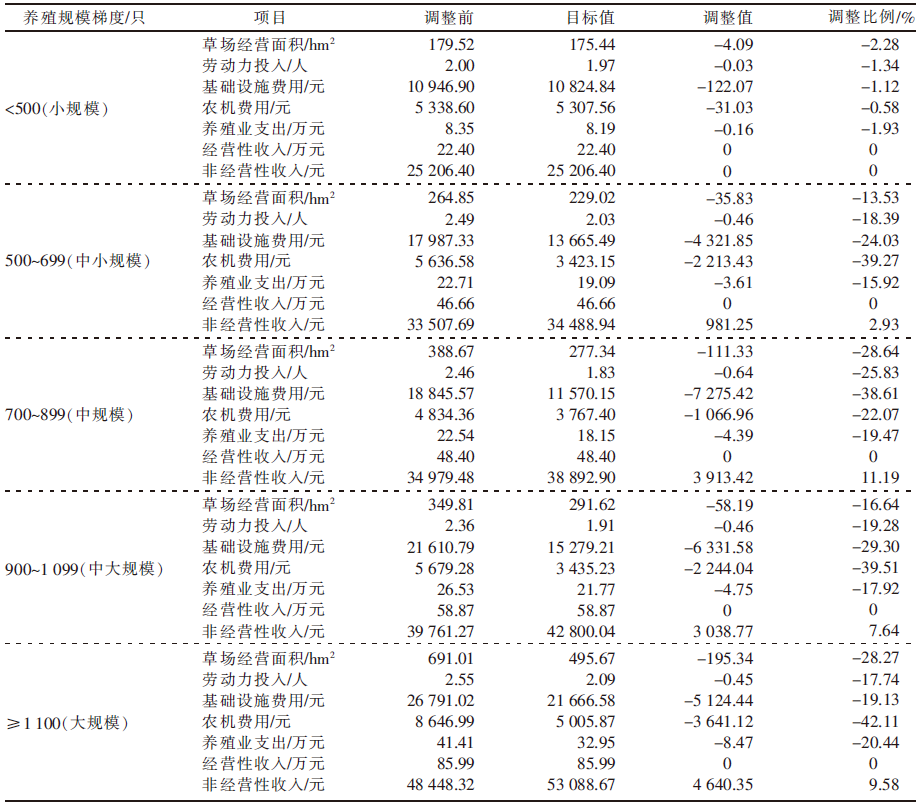畜牧与饲料科学 ›› 2023, Vol. 44 ›› Issue (1): 7-16.doi: 10.12160/j.issn.1672-5190.2023.01.002
• 科技创新支撑畜牧业高质量发展专栏——乡村振兴背景下畜牧业高质量发展专题 • 上一篇 下一篇
内蒙古鄂尔多斯市绒山羊产业发展现状及效益分析——基于鄂托克旗入户调查数据
任鹏跃1,桑丹2,张春华3,阿树瓦尼4,塔娜4,陶格特其4,斯钦孟和3
- 1.内蒙古农业大学,内蒙古 呼和浩特 010018
2.包头职业技术学院,内蒙古 包头 014030
3.内蒙古自治区农牧业科学院,内蒙古 呼和浩特 010031
4.鄂尔多斯市农牧业投资发展有限责任公司,内蒙古 鄂尔多斯 017010
Development Status and Benefit Analysis of Cashmere Goat Industry in Ordos City, Inner Mongolia——Based on the Household Survey Data of Otog Banner
REN Peng-yue1,Sangdan 2,ZHANG Chun-hua3,Ashuwani 4,Tana 4,Taogeteqi 4,Siqinmenghe 3
- 1. Inner Mongolia Agricultural University,Hohhot 010018,China
2. Baotou Vocational and Technical College,Baotou 014030,China
3. Inner Mongolia Academy of Agricultural and Animal Husbandry Sciences,Hohhot 010031,China
4. Ordos Agricultural and Animal Husbandry Investment Development Co.,Ltd.,Ordos 017010,China
摘要:
[目的] 分析内蒙古鄂尔多斯市绒山羊产业现状与效益,为加快该地区畜牧业高质量发展提供参考。[方法] 以鄂尔多斯市羊绒主产区鄂托克旗为研究对象,于2020—2022年通过入户调查获得100户养殖牧户的相关数据。分析该地区牧户经营结构和绒山羊养殖结构;构建DEA研究模型,分别计算养殖绒山羊500只以下(小规模)、500~699只(中小规模)、700~899只(中规模)、900~1 099只(中大规模)、1 100只及以上(大规模)养殖户的综合效率、纯技术效率、规模效率及规模报酬。[结果] 该地区绒山羊养殖数量呈上升趋势,其他牲畜的养殖数量虽有所增加,但远小于绒山羊;基础母羊繁殖率维持在较高水平,繁殖双羔率大幅度提升;生产模式以绒肉结合为主,低年龄的绒山羊用来生产高细度羊绒,高年龄的绒山羊主要用于产肉。鄂尔多斯市绒山羊养殖的综合效率处于低水平,存在基础设施综合使用率低等问题;在当前的技术和管理水平下,小规模养殖户对投入资源的使用效率更高,并且通过提高技术和管理水平,小规模养殖户效益提升更加明显;除了大规模养殖户的规模效率均值大于纯技术效率均值,其余规模梯度的规模效率均值均小于纯技术效率均值;小规模养殖户更可能通过增加投入提升养殖效益,而大规模养殖户大部分可获得最优生产效益,不必继续增加要素投入。[结论] 鄂尔多斯市绒山羊产业发展基础好、发展潜力巨大、生产效益不断提高,对牧民增收有着极大的推动作用。不同规模养殖户需要通过整合资源实现资源共用共享,通过发展标准化养殖提高资源利用率,这些措施可在一定程度上提高绒山羊养殖效益。
中图分类号:









